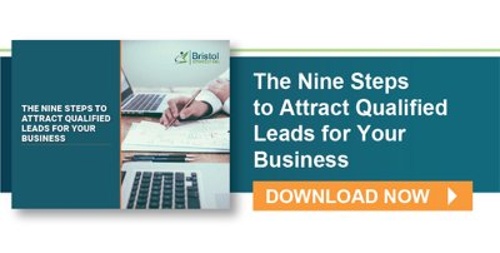
As you are aware, all buyers go through a three-step journey with major purchasing decisions. The first step is simply becoming aware of the need to buy the item. Unlike the pre-Internet era when companies relied on advertising to get the word out about their products, the majority of people today arrive at this first step on their own through on-line search. They conduct online research by reading reviews, comparing prices, and investigating the companies from whom they are considering buying products or services.
Next comes the consideration stage. At this point, your prospects are getting more serious about making a purchase. In fact, they are actively looking for things to rule some sellers out and narrow down their list of possibilities. They are likely to raise a lot of objections and push back, which you must be prepared to counter. Naturally, the decision stage comes last. The prospect is finally ready to make a purchase.
This entire cycle used to consume significant time and resources for the average sales team. Unfortunately, many potential buyers found their efforts annoying and intrusive. No one wants to receive unsolicited email, have their browsing interrupted by pop-ups, or receive a phone call that disrupts the flow of their day. This only serves to alienate the prospect and drive them to your competition. Marketing funnel automation provides a better alternative.
In the past, nurturing a sales lead meant making phone calls, mailing information, and being prepared to overcome an objection at any stage of the buying cycle. With marketing funnel automation, you nurture the lead from one stage to the next with opt-in emails and useful content that inspires them to move forward. For example, assume that you offer a free eBook to a prospective customer while he or she is still in the awareness phase. The eBook educates your contact while spurring him or her on to the consideration stage at the same time.
Useful Tip: Use marketing automation tools as a way to automate how your content engages with prospects
The content that you offer to prospects can come in several different forms. Publishing a regular blog helps them find the information they are looking for while also establishing your start-up company as an industry thought leader. Marketing emails are also effective because they provide product updates and other valuable information on an opt-in basis. Interaction via your company’s various social media platforms is a fun and non-threatening way to make initial contact and then begin the nurturing process.
Your content should be as interactive as possible to stand out from the competition, provide real value to your prospects, and present information in a unique way. Most importantly, this type of content is more trackable compared to only static content such as a PDF file. Video marketing is a fantastic way to add personality and interactivity to your marketing efforts. Video is also a great medium because it can communicate a lot of information in a very short time but also is optimized for viewing on mobile devices and more than 50% of web traffic is on mobile devices.
You have so much on your plate already as an entrepreneur that even thinking about getting a marketing program started can feel overwhelming. On the other hand, you know that neglecting this crucial aspect of business growth could put you in the category of start-ups that fail within the first two years. Starting a business is definitely time-consuming, but your challenges go beyond that. Not only do you not know which marketing tactics are most effective, but you have no idea how to automate them. Some of the marketing concerns you may be wondering about as part of the management team of a start-up organization include:
Do these challenges sound familiar? If so, it’s because most new business owners struggle with them. It’s what you decide to do from here that determines your future success. After all, you don’t have the resources to have a separate department for each aspect of marketing nor do you have the time to do it manually. The good news is that Bristol Strategy has more than 25 years of marketing and sales experience and can help high-tech businesses like yours develop an automated marketing funnel that delivers qualified opportunities to sales. Download your copy of the eBook "8 Steps to Attract Qualified Leads for your Business" which outlines the process of creating content and nurturing leads down the marketing funnel until they are ready to buy.

We have learned long ago that more than half of the visitors to your website are most likely qualified but just not ready to buy. Any form of nurturing, be it simply blog notification emails, or a prescribed email nurturing campaign, will help to keep your business "Top-of-Mind" when the prospect becomes ready to engage.
Additionally, if you are already investing in on-line advertisements, then consider implementing what is called a "Retargeting" campaign. Retargeting is a methodology where visitors to your website are tagged so that later your advertisements can be redirected to them when they visit other sites that sponsor ads. This technique enables your company to appear larger than life, and it is the best way to nurture prospects who have not yet converted into a lead on your website.
This first article by Bristol Strategy describes the steps to implement lead nurturing including the 8 considerations for successful lead nurturing.
Let’s start with the assumption that your website is attracting visitors. Not just random visitors, but the right visitors who have a genuine interest in the products and services provided by your business. Some of these visitors are first-timers, looking for general information. Others are repeat visitors, returning for more details. But all of these visitors remain anonymous (which means none of them can be courted as leads!) until they choose to provide contact information in exchange for your premium level content, blog updates, newsletter subscriptions, or other offers.
When website visitors opt to share their contact information, they open the door for you to begin the lead nurturing process...
This next article by Zach Jones of Vertical Measures, provides tips to improve your lead nurturing program. These tips may seem like common sense, but it is worth your time to ensure you are following the best practice steps for success.
Before we get started, I think we need to go through the now-cliché “email still matters” spiel because, for some reason, a lot of people are convinced that email is dead.
Well, it isn’t.
According to the 2015 National Client Email Report, “The average ROI of £38 (Translates to nearly $50) confirms email marketing’s reputation as a trusted marketing channel that pulls its weight and consistently delivers a positive return.” It yields a great ROI, it’s easy to nurture leads long term, and it ties in seamlessly to all of your other marketing strategies.
Now that we’ve cleared the air, let’s talk about how to make the most out of your email campaigns. To do that, you must find ways to nurture the audience on an individual level. In fact, ...
This article by Lauren Lutz of Cincinnati Inbound Marketing offers a brief introduction to Inbound Marketing and then lists the 6 most important questions when creating an effective lead nurturing workflow.
Working at an inbound marketing agency, we get asked about lead nurturing a lot by our clients — sales and marketing staff alike. When should I start following up with leads? What do I need to say to them? Can I automate some sort of email workflow to keep checking in with them?
We can answer these questions for you, but the thing is, there’s not a golden ticket for anyone. For your marketing and sales teams to create an effective lead nurturing campaign, you have to get to the root of the communication: the person on the other end. Like we said last week, the modern marketing and sales funnel is buyer-centric. So, creating a lead follow-up sequence that works is dependent upon who you’re trying to make contact with, where they are in the...
Last but not least in the list of lead nurturing tips comes from Johanna Rivard from Pure B2B. Of course, the best learning is from mistakes. This article shares the 10 ways to lose a lead. When reviewing your lead nurturing program, be sure to check if you are making some of these mistakes.
Are you inundated with articles telling you to nurture your qualified leads? Perhaps you’ve grown weary of all the advice you’ve been hearing about how to get your prospects moving faster along the sales funnel?
Strategies about how to attract and grow your leads often vary depending on who you’re talking to. Sometimes it involves complicated steps, mind-reading powers, a certain amount of creativity, as well as really good timing.
Whatever type of marketer you are, this much is clear: Acquiring leads is hard, but losing them is easy.
When it comes to lead generation, it’s surprisingly easy to drop the ball. And once that ball is dropped, it gets a whole lot harder to get back on track.
If you need reminding about what NOT to do when...
Bristol Strategy is a full funnel inbound marketing agency and inbound sales agency offering the full complement of services to enable our clients to surpass their business objectives by transforming the way they engage with their buyer on-line. Reach out to us to learn more about how our experience and capabilities can help your business grow.
Ask us about our unique approach that creates a full-funnel "inbound" engagement model for your business that attracts and converts digitally engaged prospects.